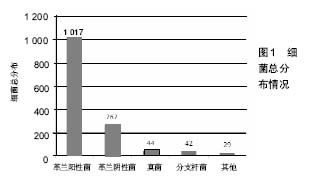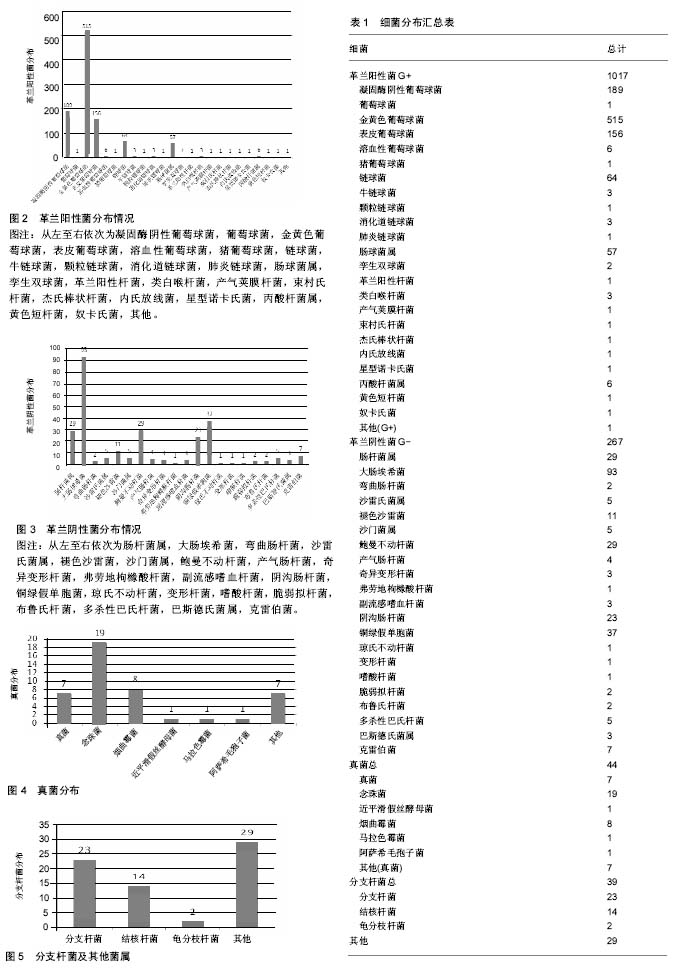| [1] Mortazavi SM, Molligan J, Austin MS, et al. Failure following revision total knee arthroplasty: infection is the major cause. Int Orthop. 2011;35(8): 1157.[2] Kurtz SM, Lau E, Schmier J, et al. Infection burden for hip and knee arthroplasty in the United States. J Arthroplasty. 2008; 23(7): 984-991.[3] 龚江浩,蔡航,鲍丰,等. 人工关节置换患者术后感染病原菌分布与耐药性分析[J].中华医院感染学杂志, 2015,25(11): 2440-2441+2449.[4] 王东伟,郑大伟,翟晓慧,等. 人工关节置换术后感染病原菌分布与耐药性分析[J].中华医院感染学杂志, 2015, 25(19): 4415-4417.[5] 王加利,张燕,蔺伟,等. 人工关节置换术后假体感染的病原学分析[J]. 中华医院感染学杂志, 2014, 24(9): 2251-2253.[6] Roger PM, Tabutin J, Blanc V, et al. Prosthetic joint infection: A pluridisciplinary multi-center audit bridging quality of care and outcome. Med Mal Infect, 2015;45(6): 229-236.[7] Achermann Y, Stasch P, Preiss S, et al. Characteristics and treatment outcomes of 69 cases with early prosthetic joint infections of the hip and knee. Infection, 2014;42(3): 511-519.[8] Subramanian B, Holloway E, Townsend R, et al. Infected total knee arthroplasty due to postoperative wound contamination with Pasteurella multocida. BMJ Case Rep. 2013;2013. pii: bcr2013009973.[9] Tsai JC, Sheng WH, Lo WY, et al. Clinical characteristics, microbiology, and outcomes of prosthetic joint infection in Taiwan. J Microbiol Immunol Infect. 2015;48(2): 198-204.[10] Corvec S, Portillo ME, Pasticci BM, et al. Epidemiology and new developments in the diagnosis of prosthetic joint infection. Int J Artif Organs. 2012;35(10): 923-934.[11] Trampuz A, Perka C, Borens O. Prosthetic joint infection: new developments in diagnosis and treatment. Deutsch Med Wochenschr. 2013;75(138): 1571-1573.[12] Parvizi J. International consensus on periprosthetic joint infection: what was discussed and decided? Ame J f Orthop. 2013. 42(12):542.[13] Osmon DR,Berbari EF, Barendt AR, et al. Executive summary: diagnosis and management of prosthetic joint infection: clinical practice guidelines by the Infectious Diseases Society of America. Clin Infect Dis. 2013;56(1):1-10.[14] 李程, 安德烈坦普斯. 欧洲人工关节置换术后假体关节周围感染的细菌学分析[J].现代医药卫生, 2017,33(1): 21-24.[15] Pruitt, A.A. Neurologic complications of infective endocarditis. Curr Treat Options Neurol, 2013;15(4):465-476.[16] 刘照富,史鹏博,赵灿,等. 人工全膝关节置换术后并发症研究进展[J]. 风湿病与关节炎, 2016,5(5): 78-80.[17] Mahmoud SS, Sukeik M, Alazzawi S, et al. Salvage procedures for management of prosthetic joint infection after hip and knee replacements. Open Orthop J. 2016;10:600-614.[18] Saginur R, Stdenis M, Ferris W, et al. Multiple combination bactericidal testing of staphylococcal biofilms from implant-associated infections. Antimicrobial Agents & Chemotherapy, 2006. 50(1):55-61.[19] Jacqueline C, Caillon J. Impact of bacterial biofilm on the treatment of prosthetic joint infections. J Antimicrob Chemother. 2014;69 Suppl 1:i37-i40.[20] Day LJ, Qayyum QJ, Kauffman CA. Salmonella prosthetic joint septic arthritis. Clin Microbiol Infect. 2002;8(7):427-430. [21] Pavoni GL, Giannella M, Falcone M, et al. Conservative medical therapy of prosthetic joint infections: retrospective analysis of an 8-year experience. Clin Microbiol Infect. 2004; 10(9):831-837.[22] Qasim SN, Swann A, Ashford R. The DAIR (debridement, antibiotics and implant retention) procedure for infected total knee replacement - a literature review. Sicot J. 2017;3:2.[23] Sherrell JC, Fehring TK, Odum S, et al. The chitranjan ranawat award: fate of two-stage reimplantation after failed irrigation and débridement for periprosthetic knee infection. Clin Orthop Relat Res. 2011;469(1):18-25.[24] 陆吴超,季卫锋,马镇川. 关节镜下清创后持续灌洗联合中药口服治疗全膝关节置换术后急性期感染[J]. 中医正骨, 2015,27(1): 51-53.[25] 孙振辉,王磊,孙云波,等. 人工全膝关节置换术后深部感染的治疗[J]. 中国修复重建外科杂志, 2012,26(8): 220-222.[26] ämsen E, Stogiannidis I, Malmivaara A, et al. Outcome of prosthesis exchange for infected knee arthroplasty: the effect of treatment approach. Acta Orthopaedica. 2009;80(1):67-77.[27] Kunutsor SK, Whitehouse MR, Lenguerrand E, et al. Re-infection outcomes following one- and two-stage surgical revision of infected knee prosthesis: a systematic review and meta-analysis. PLoS One. 2016;11(3):e0151537.[28] 蔡碰德,胡懿郃,谢杰,等. 应用抗生素骨水泥间隔体二期翻修治疗人工全膝关节置换术后迟发感染[J].中国修复重建外科杂志, 2012,26(10): 1169-1173.[29] Castelli CC, Gotti V, Ferrari R. Two-stage treatment of infected total knee arthroplasty: two to thirteen year experience using an articulating preformed spacer. Int Orthop. 2014;38(2):405-412.[30] Erhart J. Cementless two-staged total hip arthroplasty with a short term interval period for chronic deep periprosthetic infection. Technique and long-term results. Wien Klin Wochenschr. 2010;122(9-10):303-310.[31] Tsukayama DT, Goldberg VM, Kyle R. Diagnosis and management of infection after total knee arthroplasty. J Bone Joint Surg Am. 2003;85-A Suppl 1(Suppl 1):S75.[32] 邹勇根,冯宗权,邢基斯,等. 二期翻修治疗人工髋节假体周围感染[J].南方医科大学学报, 2011,31(4): 690-693.[33] Petty W, Bryan RS, Coventry MB, et al. Infection after total knee arthroplasty. Orthop Clin North Am. 2004;6(6): 1005-1014. |
.jpg) 文题释义:
文题释义:

.jpg) 文题释义:
文题释义: